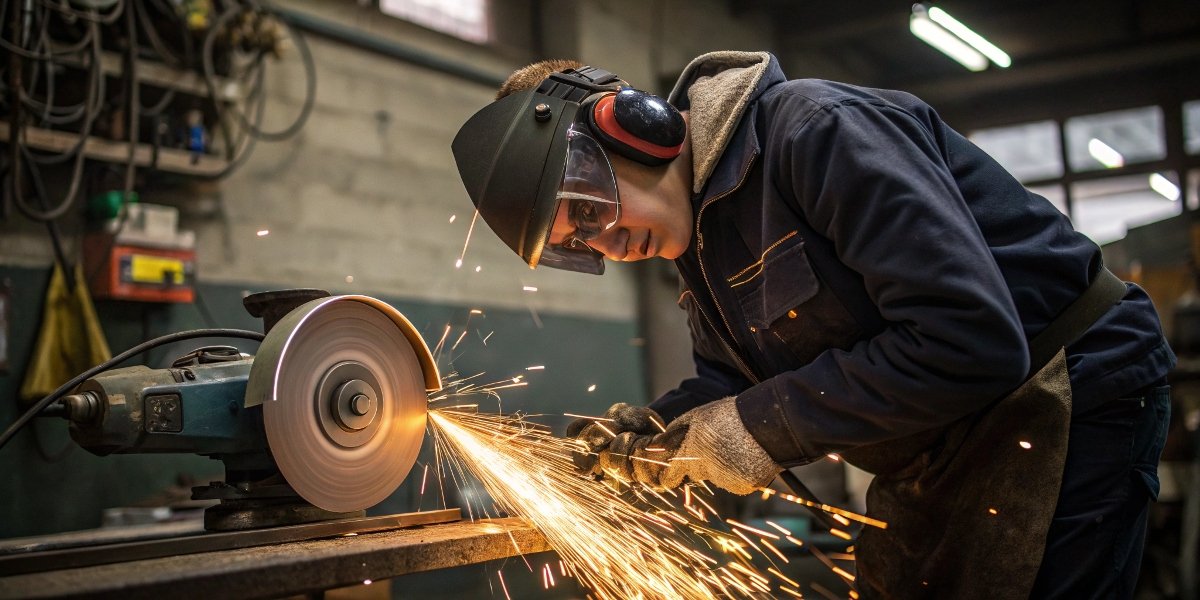
Have you ever been tempted to use the flat side of a bench grinder wheel for a quick job? This common practice seems harmless, but it’s one of the most dangerous mistakes you can make, risking a catastrophic wheel failure.
No. It is extremely unsafe to grind on the side of a standard, straight grinding wheel (Type 1). [4, 5, 8] These wheels are only designed and reinforced to withstand pressure on their grinding face (periphery). Using the side can cause the wheel to shatter violently. [4, 8]
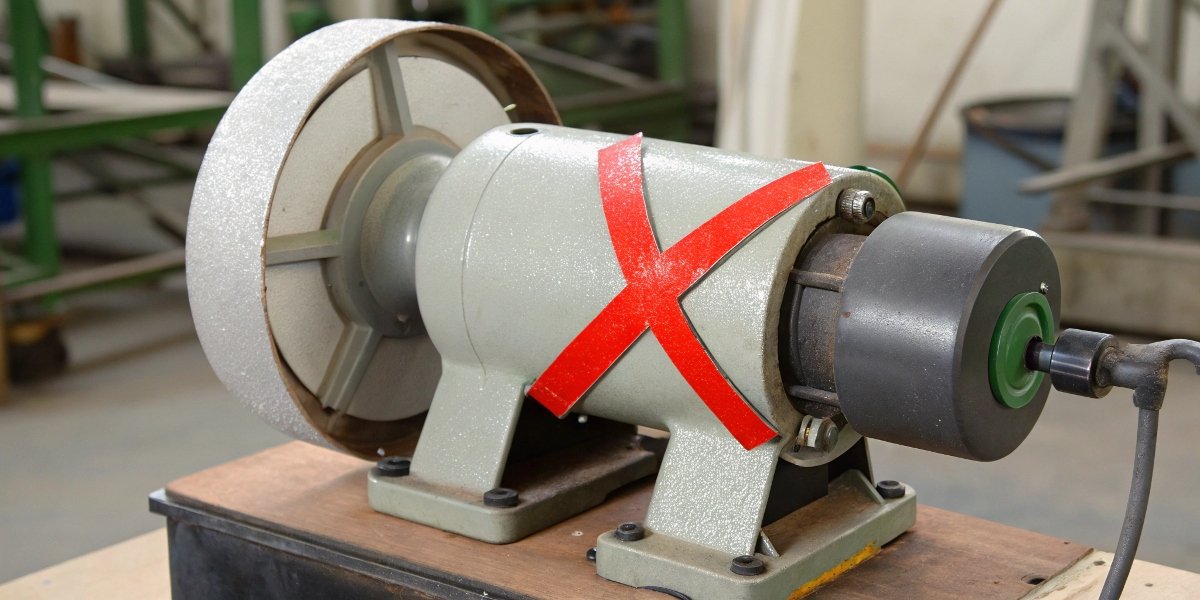
My insight on this is very direct because it is a matter of safety and physics. The abrasive layer1 and the bonding structure of a standard wheel are designed for peripheral grinding. All the force should be on the face. Grinding on the side puts immense stress on a part of the wheel that has no reinforcement, which can easily cause it to break apart while spinning at thousands of RPM2. Here at Reliable (RL), we manufacture our wheels to strict safety standards, but those standards are based on correct usage. We must always guide our B2B partners to use the wheel as intended: grind on the face, not the side.
How to dress the side of a grinding wheel?
Is your wheel’s side looking uneven, making you think it needs dressing? Trying to correct this with a standard dressing tool is the wrong approach and can make an unsafe wheel even weaker.
You should never dress the side of a standard Type 1 straight grinding wheel. [11] Dressing tools are meant to be used on the wheel’s periphery to restore its cutting face. Only wheels specifically designed for side-wall grinding, such as cup or certain dish wheels, should ever have their sides dressed. [10, 15]
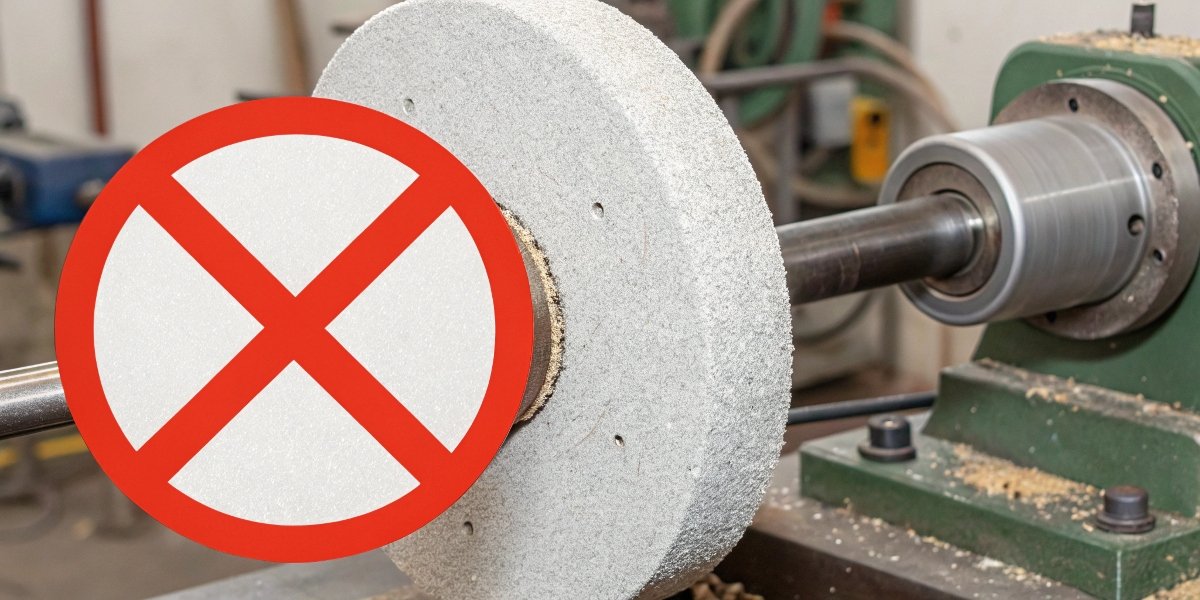
Let’s dive deeper into the why. A standard bench grinder wheel3 is a solid, straight wheel, often designated as a "Type 14" wheel. It is manufactured to be strong enough to handle the stresses of spinning and the pressure of a workpiece being pushed against its outer edge, or face. All safety tests and structural reinforcements are based on this fact. When you dress the face, you are simply removing a thin layer of material to expose fresh grit and make the face flat and true again. But if you were to apply a dressing tool to the side, you would be thinning the entire cross-section of the wheel. This creates a severe weak point. A thinned wheel is far more likely to fracture and explode under normal operating speeds. Specialty wheels, like Type 6 straight cup wheels5 or Type 11 flaring cup wheels, are completely different. They are built with the intention of being used on their sides and are common on surface grinders, not bench grinders.
Can you use the edge of a grinding wheel?
Do you need to get into a tight corner or sharpen a tool with a specific angle? Looking at the sharp corner of the wheel, it seems like the perfect tool for that very specific job, but it can be risky.
Yes, you can use the corner of a grinding wheel, but only after it has been properly prepared. [17] A sharp corner is brittle and can easily chip. The standard, safe practice is to use a dressing tool to slightly round the corner, which strengthens it significantly for controlled grinding. [17]
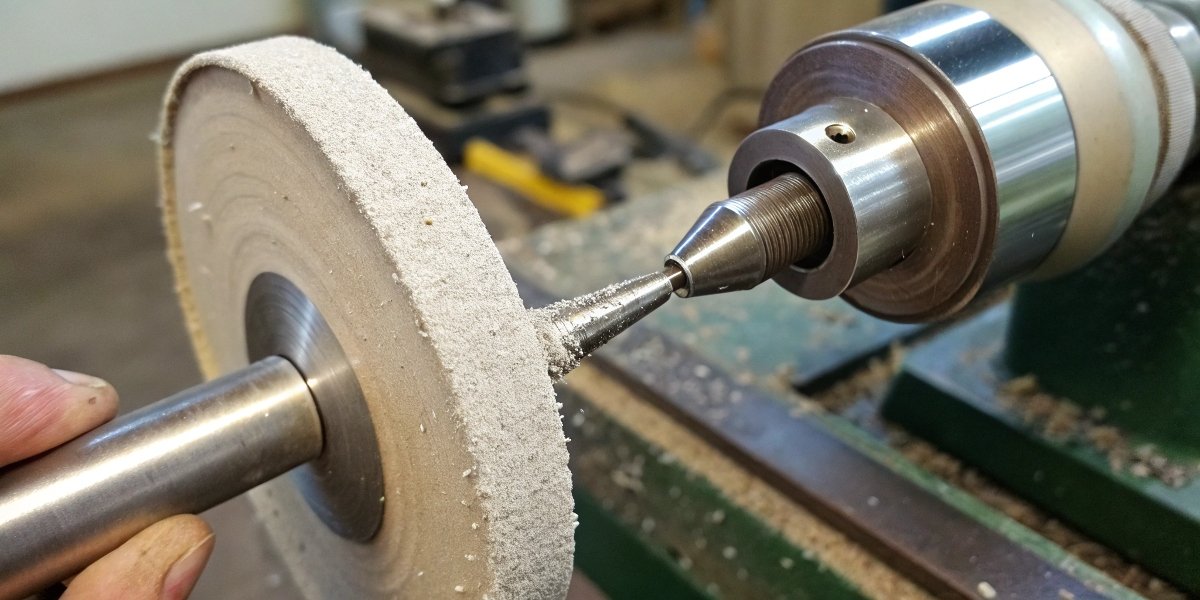
This is a key difference that every skilled operator learns. Using the corner is not the same as using the side. When you use the corner correctly, the grinding force is still directed mostly onto the wheel’s periphery, which is the strong part. However, a brand-new, razor-sharp corner is a point of weakness. It’s brittle and can easily snag on the workpiece, causing a piece of the wheel to break off and fly away. This can injure the operator and unbalance the wheel. The solution is simple and effective. You take your dressing stick and lightly pass it over the corner at about a 45-degree angle. This process, sometimes called "radiusing6" or "arcing," removes the brittle edge and creates a small, durable, rounded corner. This prepared corner is much stronger, safer, and allows you to do more detailed work, like grinding into a shoulder on a shaft, without risking damage to the wheel.
Is it safe to grind using the side of a wheel if the grinding machine has a work rest to the side?
Does your grinder have a work rest positioned next to the wheel? This can be very misleading, making it seem like the manufacturer approves of side grinding and that the rest makes it safe to do so.
No, a side work rest does not make it safe to use the side of a standard Type 1 wheel. [18] Safety is determined by the wheel’s design, not the machine’s accessories. The side rest must only be used if the machine is fitted with a proper side-grinding wheel, like a Type 2 or Type 6 cup wheel. [10]
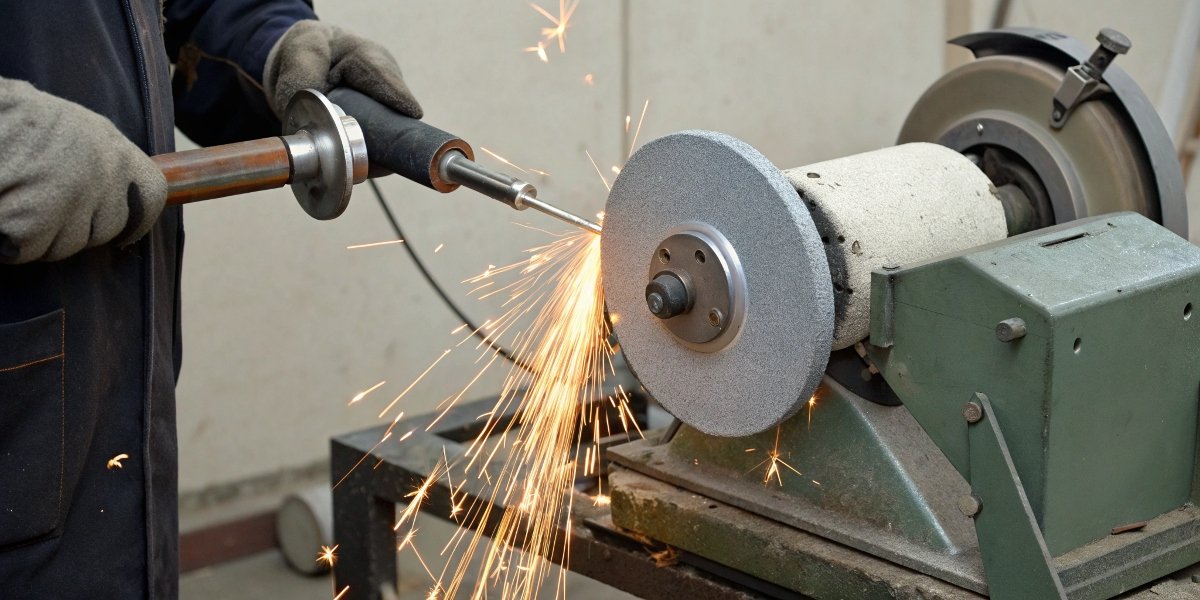
This is a critical point of information for any purchasing manager or technical director acquiring new equipment. Some specialized grinding machines do have work rests designed for side operations. However, those machines are also designed to be equipped with wheels built for side grinding, such as cup or cylinder wheels. A work rest on a simple bench grinder does not change the physics of a Type 1 wheel. Pushing a workpiece against the side of that wheel with the support of a rest is still applying dangerous lateral pressure that it was not designed to handle. The rest might give you a false sense of security, but the risk of the wheel shatter7ing remains just as high. Before ever using a side work rest8 for active grinding, you must check the specifications printed on the wheel itself. If it says "Type 1," you can only use the face. Period.
How to make a grinding wheel act harder?
Is your grinding wheel wearing out too quickly for your job? Your first thought might be to order a harder wheel, but this can cause other problems like glazing and burning, and it might not be necessary.
You can change a wheel’s performance to make it "act harder" without changing the wheel itself. [1] This is done by increasing the wheel’s speed (RPM) or by decreasing the feed rate of the workpiece. Reducing the area of contact also has the same effect. [1, 3]
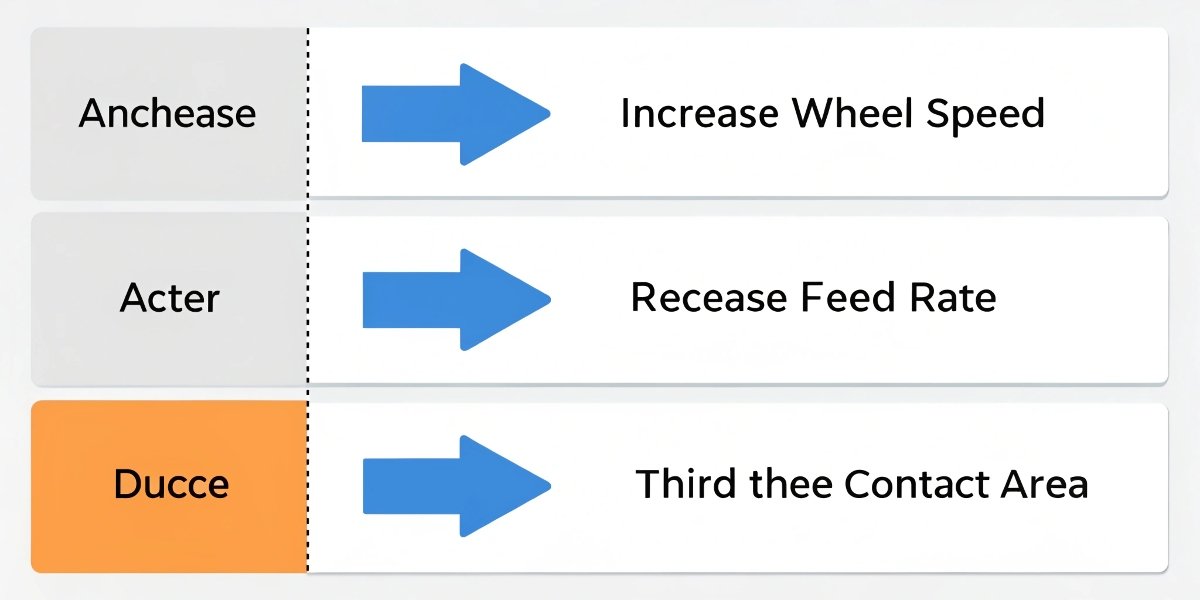
This is a valuable piece of technical knowledge that can save you time and money. Every wheel has a physical "grade," which is how strongly the bond holds onto the abrasive grains. A harder grade means the bond is stronger. However, you can change the wheel’s "acting grade" through technique. When you increase the surface speed of the wheel, each individual abrasive grain does less work on each pass. It takes a smaller "bite" out of the workpiece. This puts less stress on the grain, so it stays sharp longer and does not get pulled out of the bond as quickly. This makes the wheel act like it has a harder grade. The same thing happens if you slow down the rate at which you push the workpiece into the wheel. A slower feed rate9 means smaller cuts for each grain, less stress, and a harder-acting wheel. By understanding these relationships, operators can fine-tune performance on the fly and extend the life of their current wheels.
Conclusion
For your safety and the integrity of your tools, never grind on the side of a standard wheel. Mastering the proper use of the wheel’s face and prepared corners is essential for all professional grinding operations.
-
Understanding the abrasive layer helps in selecting the right wheel for your tasks. ↩
-
Understanding RPM’s impact can help you optimize your grinding processes. ↩
-
Understanding safety guidelines can prevent accidents and ensure proper usage of bench grinder wheels. ↩
-
Learn about Type 1 wheels to ensure safe and effective grinding practices. ↩
-
Understanding the applications of Type 6 wheels can enhance your grinding capabilities. ↩
-
Learn about radiusing to improve the safety and effectiveness of your grinding operations. ↩
-
Discover the factors that lead to wheel shattering to avoid dangerous situations. ↩
-
Find out the safety implications of using a side work rest to avoid potential hazards. ↩
-
Learn how adjusting feed rate can optimize grinding efficiency and safety. ↩
Written by
leeon
You may also be interested in:
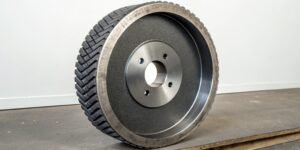
What's the application of CBN Wheels?
Struggling with grinding hard steels? Frequent wheel changes and poor finishes can hurt your bottom line. We have found that CBN wheels provide the durability
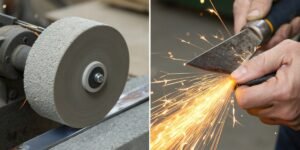
What is the difference between grinding and honing a blade?
A dull blade is a frustrating problem. It slows down production and ruins your workpiece. Using the wrong technique to fix it can cause permanent
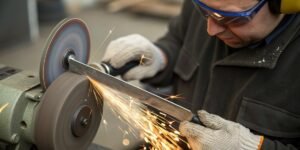
How to sharpen a knife on a bench grinder?
Is your dull knife slowing you down? A bench grinder seems like a quick fix, but you’re worried about ruining the blade. You need a

Can you use an angle grinder as a sander?
Your sanding project is tough, and your regular sander is not powerful enough. You look at your angle grinder. It has the power, but is
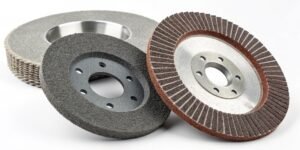
How to judge the quality of a grinding wheel?
Choosing the wrong wheel wastes money and ruins parts. Poor quality leads to downtime and rejection. A few key checks can guarantee you pick the

What is low stress grinding?
Struggling with parts failing due to hidden stress from grinding? This common issue causes cracks and reduces component life, costing you money. Low stress grinding
